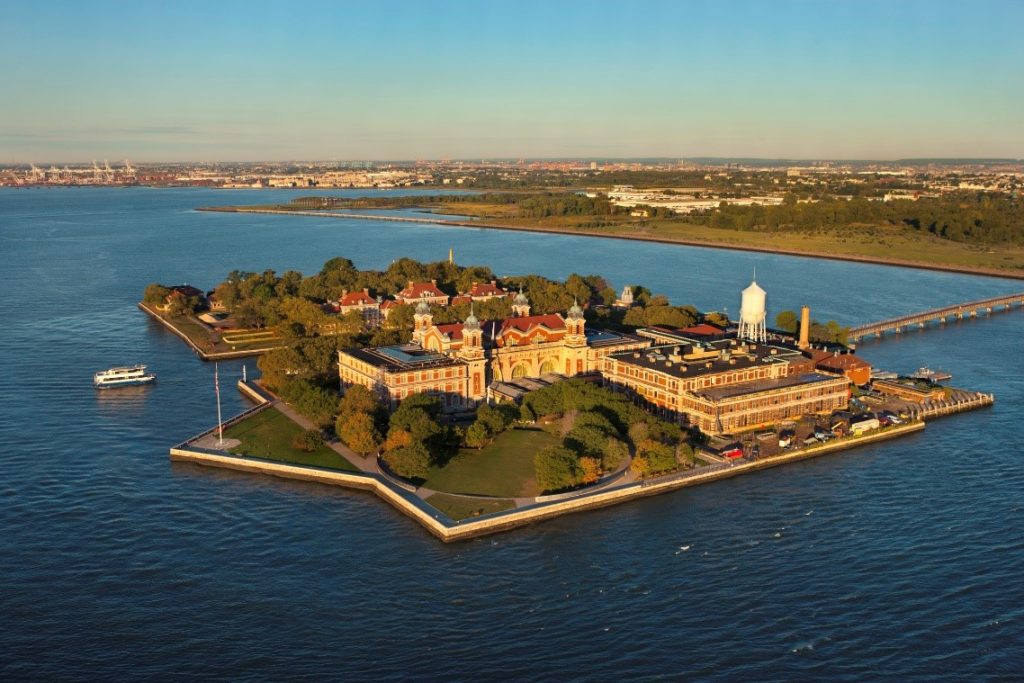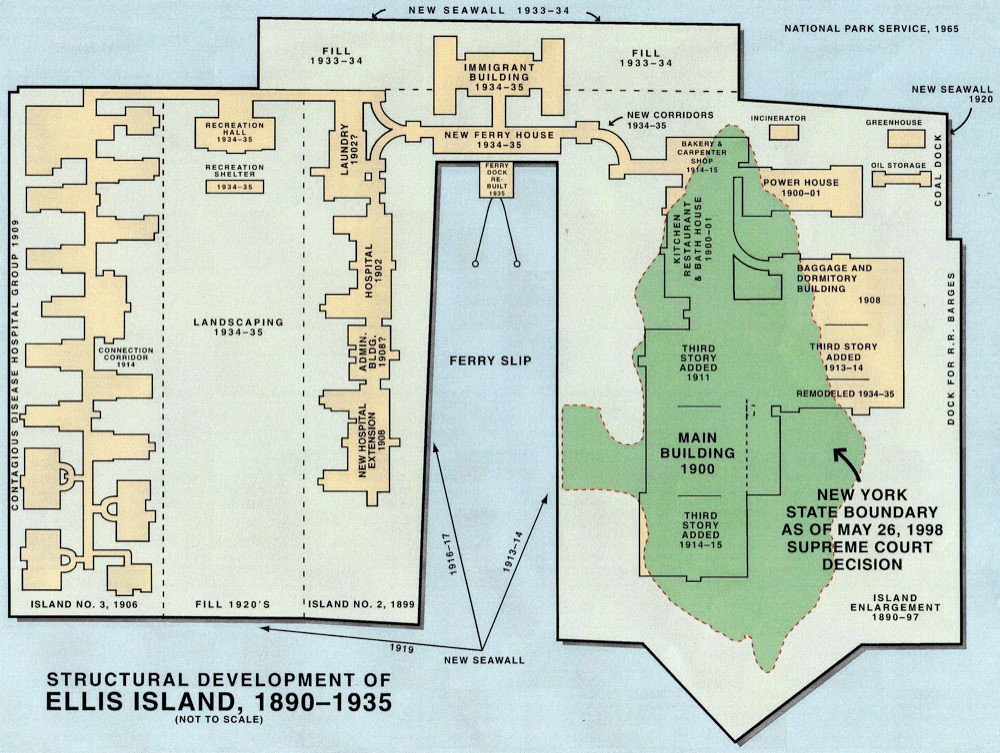July 28, 2020
DEP : It’s 1998, Supreme Court Says Most of Ellis Island Is in New Jersey

Then, there’s that island on which more than 12 million immigrants took their first steps in America.
It’s a good bet most folks think Ellis Island belongs to New York, just like those two football teams.
First, back to the sports franchises that consider New Jersey their home field, but keep New York in their monikers.
Why? Perhaps it’s their history.
The New York Giants have been around since 1925 and have had a home field in two New York locations – the Polo Grounds in Manhattan and Yankee Stadium in the Bronx. For the record, they also played at Yale Bowl in New Haven, Conn., while Yankee Stadium was undergoing renovations in 1973-74 and at Shea Stadium in Queens in 1975 (the team was still waiting for the completion of its stadium in New Jersey, which opened the next year). And the team’s formal corporate name is “New York Football Giants,” to distinguish it from the pro baseball team that once also called itself the New York Giants and also mostly played on the Polo Grounds. (No problem with that now; the MLB team moved to San Francisco after the 1957 baseball season.)
.As for the New York Jets, they were founded as the Titans of New York in 1959; it’s been said that the owner thought “titan” projected a stronger image than the name of that other N.Y. team (the Giants). They also played at the Polo Grounds, but a few years later, went through both a name and a home field change: In 1963, under new ownership, they became the New York Jets, in anticipation of playing near LaGuardia Airport; in 1964, the team moved to Shea Stadium in Queens, where it would play through the 1983 season. And when the Jets made their one and only appearance in the Super Bowl III in 1968 – led by QB Joe Namath to a 16-7 win over the Baltimore Colts – the franchise was still calling Shea its home field.
Still, they play in New Jersey and have for more than three decades … so maybe it’s just the glamour of being connected with the Big Apple. After all, as Frank Sinatra (yes, a Jersey guy) crooned: “If I can make it there, I’m gonna make it anywhere / It’s up to you, New York, New York.”
Here, a look at a court decision over a border battle that put most of the island that served as the gateway to America for immigrants from 1892 to 1954 in the Garden State.
And now, a look at 1998 …
In 1998, the Supreme Court ruled in New Jersey v. New York that most of historic Ellis Island – approximately 83 percent of it – is actually in New Jersey.
The 27.5-acre island, the storied “gateway to America” through which more than 12 million immigrants entered the United States between 1892 and 1954, was originally much smaller – only about 3 acres in the early 1800s, before the construction of the immigration facility.
In 1834, Congress approved a compact between New Jersey and New York that gave the above-water land of the original 3-acre island to New York, while the submerged lands surrounding the island went to New Jersey. In 1890, in order to make room for the new immigration station, the federal government embarked on a massive filling project, expanding the size of the island tenfold over the next 40 years.
 >
>New Jersey contended that the artificial portions of the island, built atop the previously submerged lands, had never stopped being part of New Jersey. New York argued that the whole island, including the expanded parts, had long been considered part of the Empire State.
Staff from the DEP’s Bureau of Tidelands, GIS unit and Land Use Regulation Program were instrumental in proving New Jersey’s claim, painstakingly gathering evidence from old tidelands conveyance records, aerial photographs, historic maps and other archival records, and providing expert testimony to the court.
On May 26, the Supreme Court ruled 6 to 3 in favor of the Garden State. Ironically, two justices born in opposing states voted against their home states – Brooklyn native Justice Ruth Bader Ginsburg sided with New Jersey, while Justice Antonin Scalia, born in Trenton, voted in favor of New York.
###